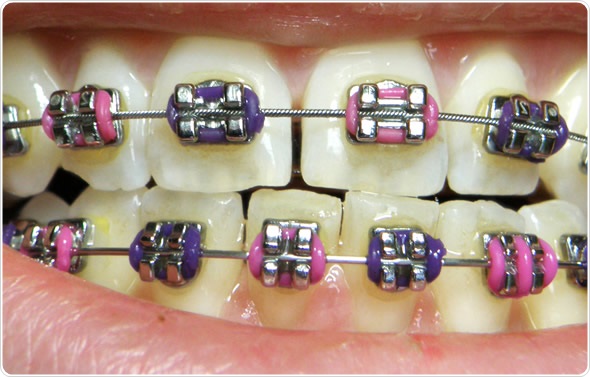Selecting the Best Cumming Orthodontics for Effective Braces and Aligners Solutions
Selecting the Best Cumming Orthodontics for Effective Braces and Aligners Solutions
Blog Article
Comprehensive Overview to Orthodontics Treatments for Fixing Dental Imbalances
Understanding the details of each treatment, including their devices, advantages, and potential downsides, is vital in making notified decisions regarding one's orthodontic therapy. As we browse through the comprehensive guide to orthodontic treatments for correcting dental misalignments, the detailed details of each approach will certainly unravel, dropping light on the path towards a practical and unified dental positioning.
Orthodontic Procedures Review

Normal modifications and monitoring are important components of orthodontic therapy to make sure development is on track and to make any needed alterations along the way. By undergoing orthodontic procedures, patients can not only attain a straighter smile however also enhance their general oral health and function.
Typical Dental Braces: How They Work
When taking into consideration orthodontic therapies for dental misalignments, traditional dental braces attract attention as a tried and true technique for remedying teeth positioning. Conventional braces are composed of braces, cords, and bands that function with each other to apply constant stress on the teeth, gradually moving them into the preferred placement. The brackets are affixed to the teeth using an unique adhesive, and the wires are threaded through the brackets. By adjusting the stress of the cables, orthodontists can manage the direction and force related to each tooth, guiding them into appropriate alignment gradually.
As stress is applied to the teeth through the dental braces, the bone bordering the teeth is improved to sustain the new tooth positions. Clients will require routine adjustments at the orthodontist's workplace to ensure the braces continue to apply the proper stress for effective teeth activity.
Unseen Aligners: Disadvantages and pros
Invisible aligners provide a discreet and practical choice to traditional braces for remedying dental misalignments. These clear, tailor-made trays are virtually undetectable when put on, making them an enticing alternative for individuals seeking a much more aesthetically pleasing orthodontic treatment. One of the main benefits of invisible aligners is their removability, enabling for less complicated upkeep of dental hygiene compared to typical braces. People can eliminate the aligners before consuming or brushing their teeth, reducing the danger of food obtaining embeded the device and streamlining the cleansing procedure.

Surgical Orthodontic Options
Surgical treatments in orthodontics existing feasible options for attending to intricate dental misalignments that might not be properly solved with standard orthodontic therapies. While typical dental braces and invisible aligners can correct lots of orthodontic issues, certain instances need surgical intervention to attain optimum outcomes. Surgical orthodontic options are usually recommended for serious malocclusions, significant jaw discrepancies, and cases where the underlying bone framework requires adjustment to attain correct placement.
One common surgical orthodontic procedure is orthognathic surgical treatment, which includes repositioning the jaws to fix functional problems such as problem chewing or speaking. This surgery is typically executed in cooperation with an orthodontist who assists straighten the view it teeth prior to and after the procedure. Surgical orthodontics may also involve procedures to subject influenced teeth, remove excess gum tissue, or improve the jawbone to develop a more unified face profile.
Prior to taking into consideration surgical orthodontic choices, patients go through a thorough assessment to identify the requirement and potential advantages of such interventions. cumming orthodontist. While surgery may appear complicated, it can considerably boost both the feature and looks of the smile in situations where standard orthodontic treatments fall short
Retainers and Post-Treatment Care

Post-treatment care includes complying with the orthodontist's directions faithfully. This may include proper dental health techniques, participating in follow-up appointments, and wearing the retainers as recommended. Failure to abide by post-treatment treatment instructions can cause relapse, where the teeth slowly move back towards their initial settings. Consistent retainer wear, good dental hygiene, and routine oral examinations are necessary for keeping the results attained via orthodontic surgery and making sure the long-term security of the dealt with oral alignment.
Final Thought
In conclusion, orthodontic procedures browse around this web-site offer various options for dealing with dental misalignments. Surgical orthodontic options are readily available for extra severe misalignments. Overall, orthodontic procedures can efficiently enhance dental health and wellness and aesthetic appearance.
As we navigate with the detailed guide to orthodontic procedures for correcting oral imbalances, the intricate details of each method will unfold, losing light on the path toward a useful and harmonious oral positioning. - invisalign
One of the most typical orthodontic therapies is the use of dental braces, which consist of metal braces and cords that use gentle pressure to progressively change teeth right into the wanted placement.When considering orthodontic therapies for dental misalignments, typical braces stand out as a reliable method for remedying teeth placing. Additionally, unseen aligners may not be appropriate for intricate orthodontic issues that need even more substantial teeth motion, as they are normally advised for mild to moderate cases. Retainers are tailor-made orthodontic gadgets developed to hold teeth in their dealt with settings after the completion of orthodontic treatment.
Report this page